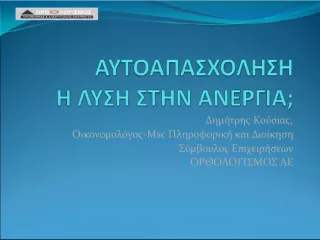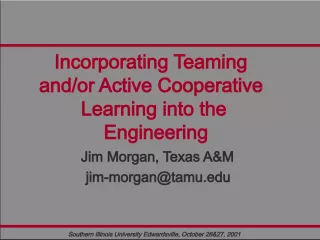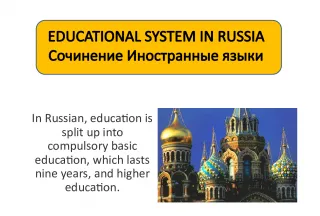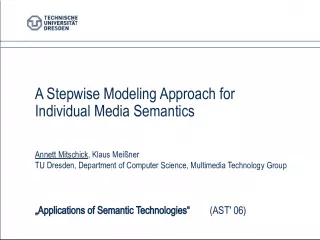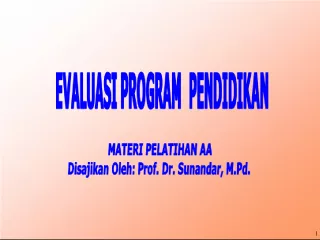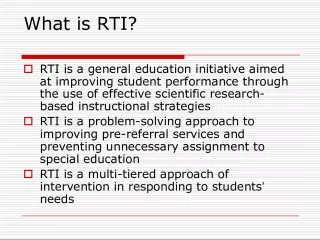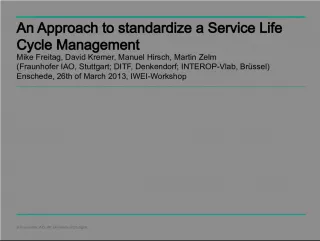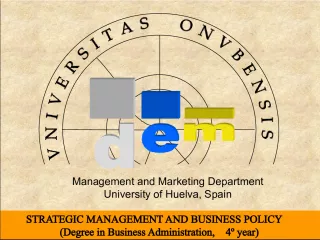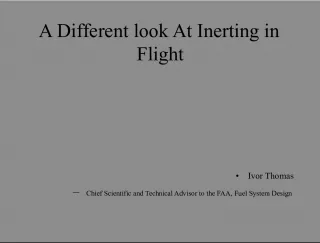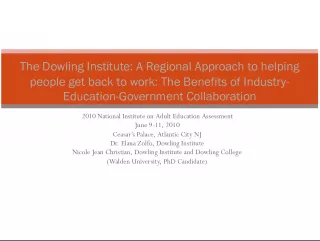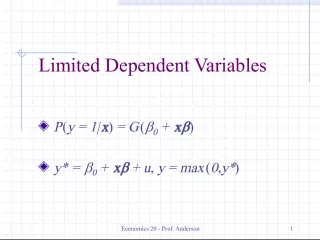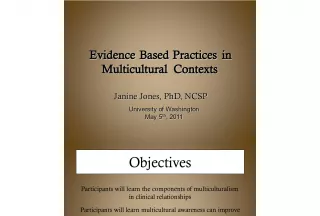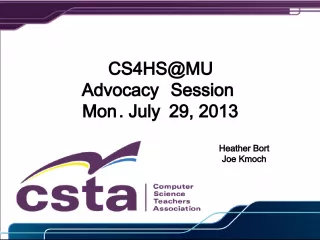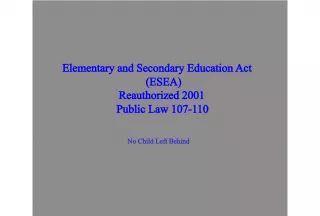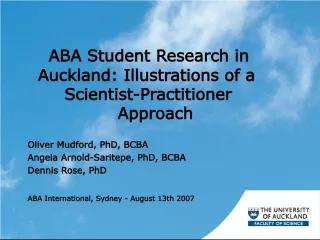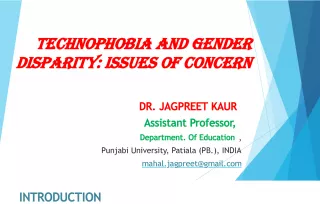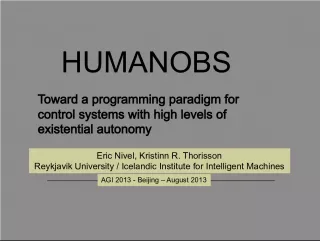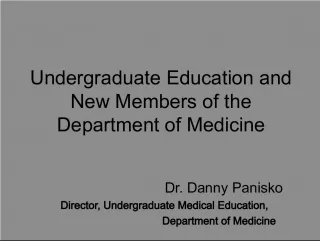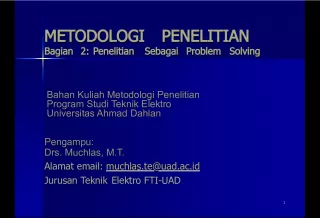"Incorporating Interdisciplinary Education in the C-Stan Approach"


Explore the benefits of interdisciplinary education in the C-Stan approach at the Franklin University Teaching and Learning Conference in June. Discover practical methods of implementation and key outcomes for students.
- Uploaded on | 2 Views
-
 edwinmatthews
edwinmatthews
About "Incorporating Interdisciplinary Education in the C-Stan Approach"
PowerPoint presentation about '"Incorporating Interdisciplinary Education in the C-Stan Approach"'. This presentation describes the topic on Explore the benefits of interdisciplinary education in the C-Stan approach at the Franklin University Teaching and Learning Conference in June. Discover practical methods of implementation and key outcomes for students.. The key topics included in this slideshow are . Download this presentation absolutely free.
Presentation Transcript
Slide1Education for the C21stAn interdisciplinary approach A Presentation for the Franklin University Teaching and Learning Conference June 2014
Slide2Goals Define Interdisciplinary Studies (IDST) Introduce the IDST research methodology Discuss the traits and characteristics developed by interdisciplinarians Identify the appeal of IDST graduates to employers Describe the IDST program at Franklin University Explain why IDST matters in C21st
Slide3Source: Picture Source: Wikimedia Commons
Slide4interdisciplinary studies is a process of answering a question, solving aproblem, or addressing a topic that is too broad or complex to be dealt with adequately by a single discipline [… it ] draws on disciplinary perspectives and integrates their insights to produce a more comprehensive understanding or cognitive advancement (Repko, 2008, p.12)
Slide5Repko’s Interdisciplinary Research ProcessA. Drawing on disciplinary insights 1. Define the problem or state the research question 2. Justify using an interdisciplinary approach 3. Identify relevant disciplines 4. Conduct the literature search 5. Develop adequacy in each relevant discipline 6. Analyze the problem and evaluate each insight or theory B. Integrating disciplinary insights 7. Identify conflicts between insights or theories and their sources 8. Create common ground between concepts and theories 9. Construct a more comprehensive understanding 10. Reflect on, test, and communicate the understanding Source: Repko (2008, p. 142)
Slide6Step 1 Define Problem or State Research Question
Slide7step 2 justify using an interdisciplinary approach1. Is the problem sufficiently complex and open to further investigation? Or is the answer already known, readily ‘googled’ for an answer that is generally agreed to be correct? 2. Does the problem spill into multiple (or at least two) disciplinary domains in order to sufficiently address the problem? Or does it fall clearly into one disciplinary domain that is adequate and best suited to address the problem comprehensively?
Slide8Step 3 Identify Relevant Disciplines
Slide9Discipline
Slide10Step 4 Conduct Literature Search
Slide11Step 5 Develop Adequacy in each RelevantDiscipline
Slide12Step 6 Analyze Problem and Evaluate eachInsight or Theory
Slide13Analyze Problem and Evaluate each Insight orTheory
Slide14Analyze Problem and Evaluate each Insight orTheory
Slide15Analyze Problem and Evaluate each Insight orTheory
Slide16Where are we?A. Drawing on disciplinary insights 1. Define the problem or state the research question 2. Justify using an interdisciplinary approach 3. Identify relevant disciplines 4. Conduct the literature search 5. Develop adequacy in each relevant discipline 6. Analyze the problem and evaluate each insight or theory B. Integrating disciplinary insights 7. Identify conflicts between insights or theories and their sources 8. Create common ground between concepts and theories 9. Construct a more comprehensive understanding 10. Reflect on, test, and communicate the understanding
Slide17Integrating Disciplinary Insights
Slide18Integrating Disciplinary Insights
Slide19Integrating Disciplinary InsightsSource: http://www.realsimple.com/food-recipes/shopping-storing/more-shopping-storing/ten-organic-foods-worth-money-00000000011780/page7.html
Slide20Integrating Disciplinary Insights
Slide21Where are we?A. Drawing on disciplinary insights 1. Define the problem or state the research question 2. Justify using an interdisciplinary approach 3. Identify relevant disciplines 4. Conduct the literature search 5. Develop adequacy in each relevant discipline 6. Analyze the problem and evaluate each insight or theory B. Integrating disciplinary insights 7. Identify conflicts between insights or theories and their sources 8. Create common ground between concepts and theories 9. Construct a more comprehensive understanding 10. Reflect on, test, and communicate the understanding
Slide22Step 7 Identify Conflicts between Insights orTheories and their Sources
Slide23identify conflicts between insights or theories andtheir Sources
Slide24Step 8 Create Common Ground betweenConcepts and Theories
Slide25Create Common Ground between Concepts andTheories
Slide26Step 9 Construct a more ComprehensiveUnderstanding
Slide27Construct a more Comprehensive Understanding
Slide28Step 10: Reflect on, Test, andCommunicate the Understanding ldkfjsdfsdfsdfjsldfjsldfjsldfjsdlfjsl dfjsdfjsldfjsldkfjsldfjsldfjsldfjsldfj sldjflsdjflsdjflsdjflskdjflskdjflskdjfl ksjfskjflsdkfjsdkljfsdkljflsdkjflsdjfl sjdflksjdlfjsdlfjsldfsldkfjslkfjsldkjf ssdfkjsldfjsldkfjsdkfjsldkfjsdlkfjs
Slide29Goals Define Interdisciplinary Studies (IDST) Introduce the IDST research methodology Discuss the traits and characteristics developed by interdisciplinarians Identify the appeal of IDST graduates to employers Describe the IDST program at Franklin University Explain why IDST matters in C21st
Slide30Chapter 3: The IDS “Cognitive Toolkit” What is the IDS ‘Cognitive Toolkit’? Intellectual Capacities (interdisciplinary perspective taking, critical thinking, intellectual dexterity, integration) Values (empathy,ethical consciousness, humility, appreciation of diversity, tolerance of ambiguity, civic engagement) Traits and Skills (Traits: entrepreneurship, love of learning, self-reflection, and Skills: communicative competence, abstract thinking, creative thinking, metacognition)
Slide31Relevance to Employers https://iccweb.ucdavis.edu/lab/articles/Skills.htm January 28, 2014 Communications Skills (Verbal, Written, Listening) Analytical/Research Skills (non-laboratory) Computer/Technical Skills Flexibility and Adaptability Multitasking or Managing Multiple Priorities Interpersonal Skills Leadership/Management Skills Multicultural Sensitivity/Awareness Planning/Organizing Problem-Solving, Reasoning, and Creativity Teamwork
Slide32Relevance to Employers – ID capacities https://iccweb.ucdavis.edu/lab/articles/Skills.htm January 28, 2014 Communications Skills (Verbal, Written, Listening) Analytical/Research Skills (non-laboratory) Computer/Technical Skills Flexibility and Adaptability Multitasking or Managing Multiple Priorities Interpersonal Skills Leadership/Management Skills Multicultural Sensitivity/Awareness Planning/Organizing Problem-Solving, Reasoning, and Creativity Teamwork Intellectual Capacities • interdisciplinary perspective taking • critical thinking • intellectual dexterity • integration Values • empathy • ethical consciousness • humility • appreciation of diversity • tolerance of ambiguity • civic engagement Traits and Skills • entrepreneurship • love of learning • self-reflection • communicative competence • abstract thinking, creative thinking, and metacognition
Slide33Relevance to Employers https://iccweb.ucdavis.edu/lab/articles/Skills.htm January 28, 2014 Communications Skills (Verbal, Written, Listening) Analytical/Research Skills (non-laboratory) Computer/Technical Skills Flexibility and Adaptability Multitasking or Managing Multiple Priorities Interpersonal Skills Leadership/Management Skills Multicultural Sensitivity/Awareness Planning/Organizing Problem-Solving, Reasoning, and Creativity Teamwork • communicative competence • interdisciplinary perspective taking • critical thinking • intellectual dexterity • Integration • tolerance of ambiguity • love of learning • empathy • ethical consciousness • humility • appreciation of diversity • civic engagement • entrepreneurship • self-reflection • abstract thinking, creative thinking, and metacognition
Slide34Relevance to Employers https://iccweb.ucdavis.edu/lab/articles/Skills.htm January 28, 2014 Communications Skills (Verbal, Written, Listening) Analytical/Research Skills (non-laboratory) Computer/Technical Skills Flexibility and Adaptability Multitasking or Managing Multiple Priorities Interpersonal Skills Leadership/Management Skills Multicultural Sensitivity/Awareness Planning/Organizing Problem-Solving, Reasoning, and Creativity Teamwork • communicative competence • interdisciplinary perspective taking • critical thinking • intellectual dexterity • Integration • tolerance of ambiguity • love of learning • empathy • ethical consciousness • humility • appreciation of diversity • civic engagement • entrepreneurship • self-reflection • abstract thinking, creative thinking, and metacognition
Slide35IDST Program at Franklin University
Slide36 IDST in the Real WorldWhy IDST matters Six “drivers” of the field’s continued advance 1. The complexity of nature, society, & ourselves 2. The complexity of the globalized workplace 3. The needs for systems thinking and contextual thinking 4. The changing nature of university research 5. The public world and its pressing needs 6. A knowledge society needs both disciplinarity and interdisciplinarity
Slide37Questions
